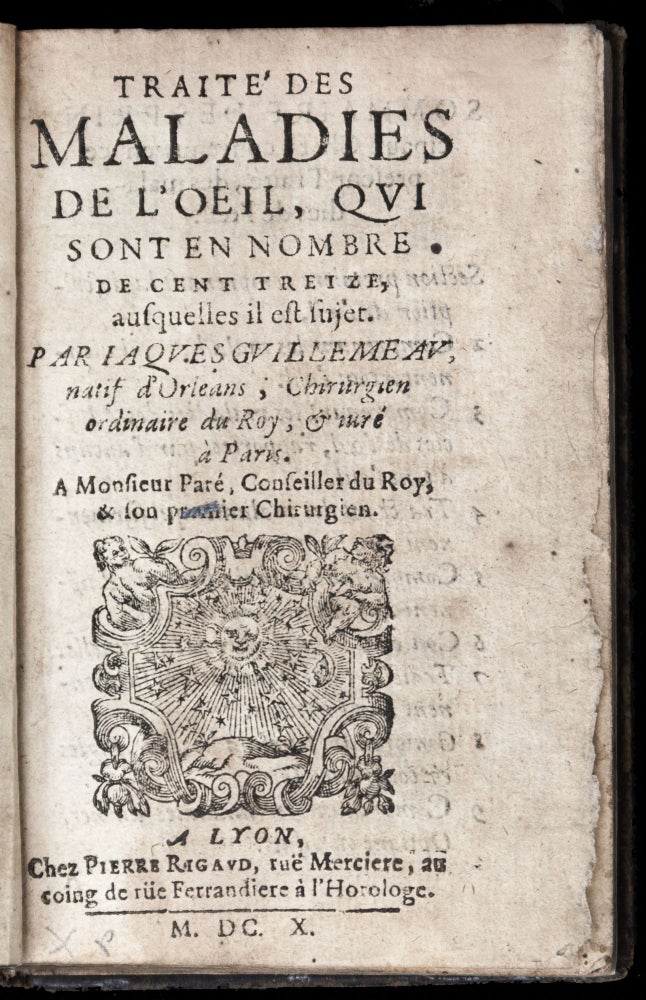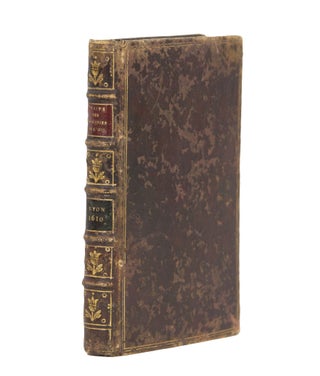Traité des maladies de l'oeil, qui sont en nombre de cent treize, ausquelles il est sujet. A Monsieur Paré, Conseiller du Roy, & son premier Chirurgien.
8vo. (30), (1) integral blank, 243, (3) pp. Bound in 19th-century calf à l’antique, lightly to moderately worn; lightly browned throughout. Very marginal paper flaw to pp. 91-96.
Rare second edition of “decidedly the best of the Renaissance books on ophthalmology” (Garrison). “Guillemeau was a pupil of Ambroise Paré; his book was an epitome of the existing knowledge on the subject, chiefly from Greek and Arabian sources” (Garrison & Morton). Guillemeau was a leading authority on ophthalmology, obstetrics, and pediatrics, and his works were widely read across Germany and the low countries, but it was in England that he had the most impact. The Traité was the basis for the earliest general book on the eye in English, Richard Bannister’s One Hundred and Thirteen Diseases of the Eyes and Eyelids (1622).
The Traité is divided into nine sections, covering everything from the anatomy of the eye to conditions affecting the iris, eyelid, and optic nerve. For each condition he discusses, Guillemeau provides its name in both Greek and Latin and then proceeds to give a detailed but highly readable account of the condition’s probable cause and most effective treatment. The present work includes a prefatory poem addressed to Guillemeau by Paré that is one of only two known poems to be published by the older surgeon, and concludes with a letter written by Le Jeune, surgeon to the king and the Duc de Guise, on a peculiar case of a patient with flea-like creatures in the whites of his eyes. It is a credit to Guillemeau’s humility that he includes the letter, since it recounts how a local old lady with no medical expertise had developed a technique to treat the condition.
The author not only studied under Paré, but also lived in his home for eight years and served with him at the Hôtel Dieu and in several military campaigns. Guillemeau later became surgeon-in-ordinary to Charles IX, Henri III, and Henri IV and helped to spread Paré’s reputation by editing his works.
Krivatsy 5139; Garrison & Morton 5818 (1585); Garrison, History, p. 203; Becker 107 (first ed.).
Price: $3,850.00


